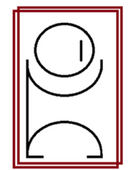The Path to Becoming a Certified Nurses Aide in New York: A Journey of Compassion and Dedication
Embarking on the journey to become a Certified Nurses Aide (CNA) in New York is a profound commitment—one filled with challenges, growth, and immense rewards. Aspiring CNAs step into a world where compassion meets clinical skill, where every interaction is an opportunity to make a meaningful difference in the lives of others. In this blog post, we'll explore the transformative journey of becoming a CNA in New York and the invaluable role these healthcare professionals play in the state's vibrant healthcare landscape.
The Role of a Certified Nurses Aide
Certified Nurses Aides are the backbone of healthcare, providing essential support to patients and residents in various settings, including hospitals, nursing homes, and home care agencies. Their responsibilities encompass a wide range of tasks, from assisting with activities of daily living to monitoring vital signs and providing emotional support. CNAs serve as trusted companions, advocates, and caregivers, enhancing the quality of life for those under their care.
The Journey to Certification
Becoming a CNA in New York involves a structured process designed to equip individuals with the knowledge, skills, and competencies necessary for the role. The journey typically begins with enrolling in a state-approved CNA training program, which includes both classroom instruction and hands-on clinical experience.
Key components of CNA training may include:
- Classroom Instruction: Learning the fundamentals of nursing theory, anatomy and physiology, infection control, and resident rights.
- Clinical Skills Training: Gaining practical experience in essential caregiving tasks, such as bathing, dressing, feeding, and transferring patients.
- Clinical Rotations: Completing supervised clinical rotations in healthcare facilities to apply classroom knowledge in real-world settings and develop proficiency in patient care.
After completing the training program, aspiring CNAs must pass the New York State Nurse Aide Competency Examination to obtain certification. This comprehensive exam evaluates both theoretical knowledge and clinical skills, ensuring that CNAs are well-prepared to deliver safe and competent care to patients.
Embracing Challenges and Growth Opportunities
The journey to becoming a CNA is not without its challenges. From mastering complex medical procedures to navigating emotionally demanding situations, aspiring CNAs must demonstrate resilience, adaptability, and compassion. Yet, it is through these challenges that they emerge stronger, more capable, and deeply committed to their calling as caregivers.
Making a Difference in New York's Healthcare Community
In New York, CNAs play a vital role in meeting the diverse healthcare needs of the state's population. Whether caring for elderly residents in nursing homes, supporting patients in hospitals, or providing compassionate assistance in home care settings, CNAs are instrumental in delivering high-quality, patient-centered care across the continuum of healthcare.
Conclusion: A Journey of Compassion and Dedication
Becoming a Certified Nurses Aide in New York is more than a career choice—it's a calling. It's a commitment to serving others with compassion, dignity, and respect, even in the face of adversity. As CNAs embark on this transformative journey, they become integral members of New York's healthcare community, touching the lives of countless individuals and families with their unwavering dedication and selfless care.





